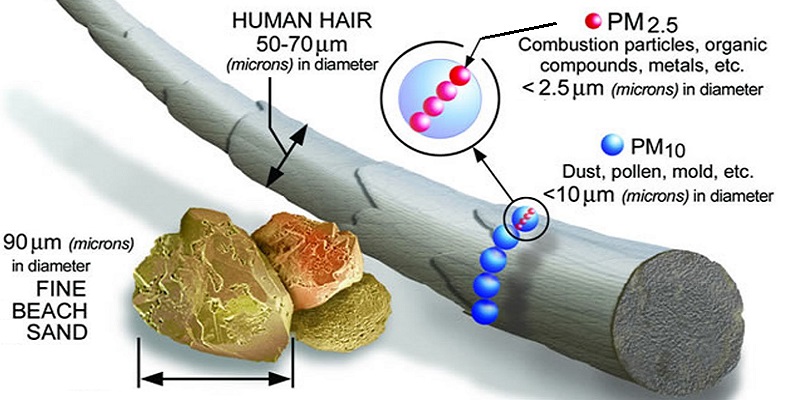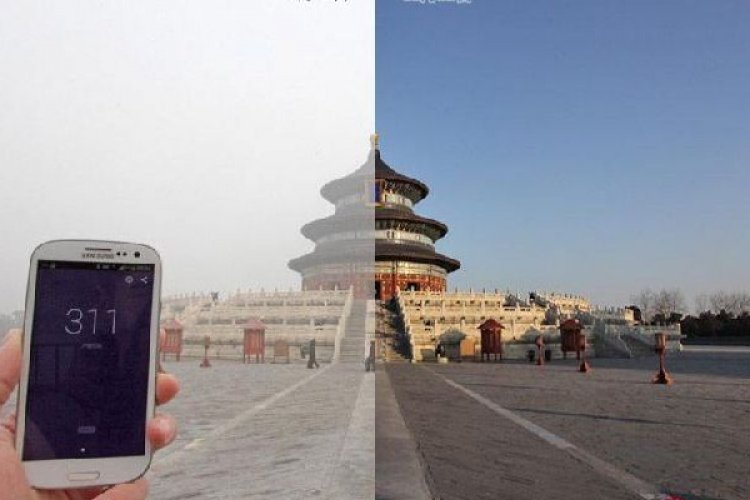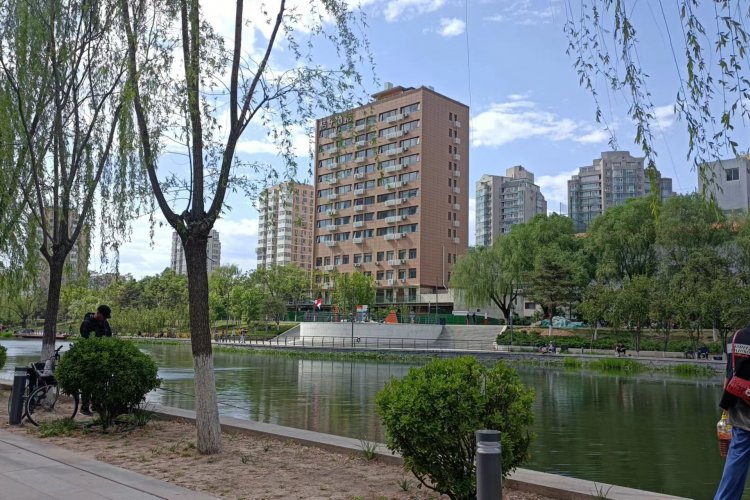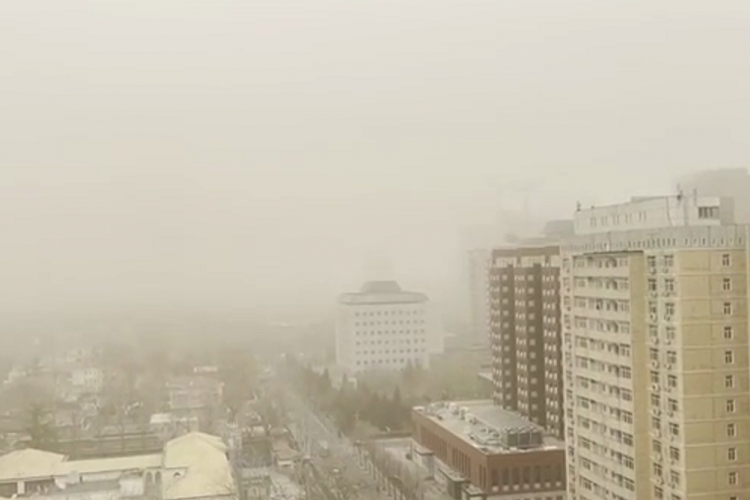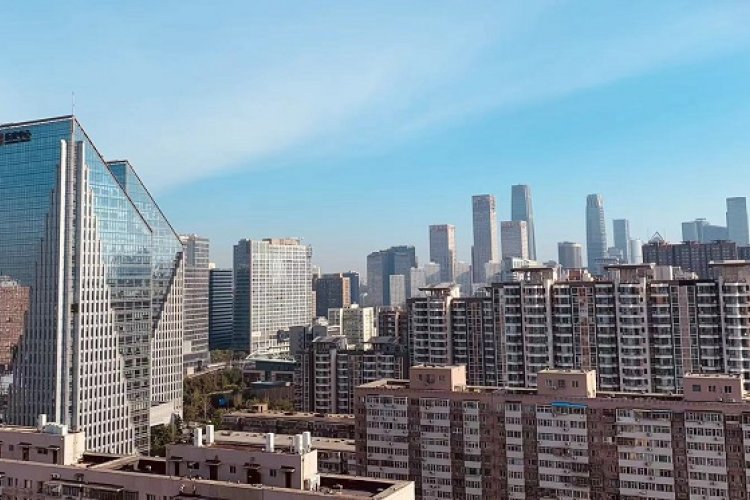Believe it or Not, Beijing's Air Was 6 Percent Better in 2015
Now that we Beijingers have survived a particulately horrendous (geddit?) December, we can take some solace in this morning's news from Beijing’s Environmental Protection Bureau that the annual average PM2.5 concentration for 2015 was 6 percent less than the previous year, falling from 80.6 micrograms per cubic meter to 86.2. That 6.2 percent drop in PM2.5 exceeded the government’s goal of a 5 percent reduction.
On top of that, Beijingers enjoyed 186 days that exceeded the (albeit lax) national safety air quality standards in 2015, a 14-day increase from the year prior.
Despite that good news, optimists should take a deep breath, as it were, and keep their enthusiasm in check.
That’s because the considerable improvement in 2015’s pollution averages still fell far short of the national safety standard, which is an average of 35 micrograms per cubic meter, according to a China Radio International report.
The China Daily quoted Beijingers who were less than impressed by the new findings, including one 29-year-old resident named Chen Yang who said: "I didn't feel the clear improvement in air quality in the winter, and many of my friends and colleagues have coughed and experienced sore throats due to the bad air recently.” Meanwhile Li Li, a 52-year-old Beijing civil servant, told the newspaper, "When might we feel the real improvement, instead of the data?"
RELATED: Only 15 More Years Before Beijing Has Clean Air
That frustration is even being echoed by local officials like Fang Li, deputy director of the Environmental Protection Bureau, who admitted: "PM2.5 pollution is still the prominent problem in Beijing and requires strengthened efforts.”
And while the latest pollution study findings fell short in the eyes of many Beijingers, they do point to a potentially promising trend. We now have three years of solid PM2.5 measurement data from the city to work with, and if we project that forward, we could be looking at amazing air quality – a dozen or so years from now.
To put that 80.6 micrograms per cubic meter in perspective, Bakersfield California – an city in the US known for having the worst air quality nationwide – had an annual average PM2.5 concentration of around 19.7 in 2014. Yes, that's nineteen-point-four. Or in other words, Beijing is roughly four times worse than one of the filthiest places in the United States (poke around with US EPA stats here).
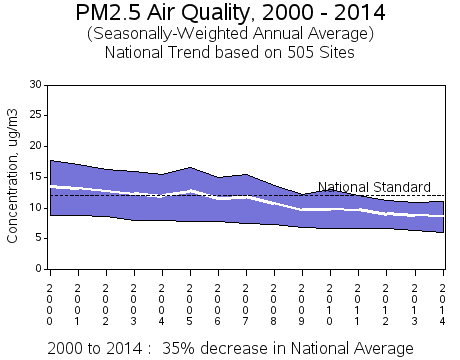
In the meantime, a special sort of demographic in the capital is making the most of that frustratingly slow progress: artists, whose pollution inspired works – like Orange Alert themed costumes and the now infamous smog bricks made by Brother Nut – were outlined in a Creators Project article published yesterday. Pollution has even become a muse for arguably the most technically inclined profession imaginable – meteorology. The Global Times reported yesterday that China Weather Network employees compiled a collage of photos of Beijing’s horizon, showing how “the city’s sky was dominated by smog for the majority of days last year.”
Hopefully improving pollution trends will leave such creative types searching for new muses in 2016.
Image: US EPA
Related stories :
Comments
New comments are displayed first.Comments
![]() admin
Submitted by Guest on Fri, 01/08/2016 - 06:21 Permalink
admin
Submitted by Guest on Fri, 01/08/2016 - 06:21 Permalink
Re: Believe it or Not, Beijing's Air Was 6 Percent Better in...
some cool graphs i found at the Beijing Ministry of Environmental Protection here
1998-2015 pollution trends in Beijing for four major pollutants:
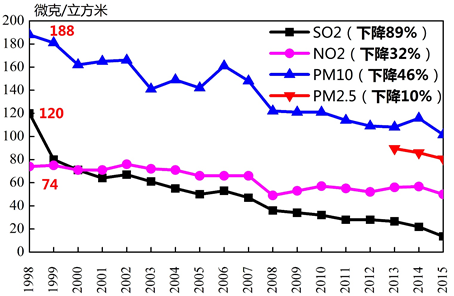
The blue line is PM10, which has been tracked regularly since 1998 and has seen significant declines over that period (46%). I ballparked the actual values and came up with a slope of that decline, which was generally a numerical decline of 3.9 um/m3 per year.
I applied that rate of decline to the PM2.5 (tracked for three years, in red above) and forecasted that should the PM 2.5 decline at a similar rate, it will be ~18 years (2033-2034) until we hit a concentration of ~10 um/m3 (the WHO standard).
2015 PM 2.5 concentrations by district
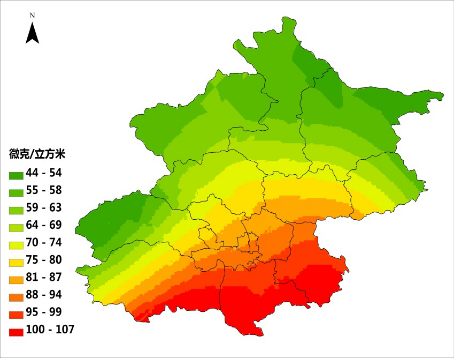
I will annotate this later, but as you can see, generally the farther north you go, the better the air gets.
Chaoyang District is sliced by two bands (88-94 basically south of the airport expressway) and (81-87 north of the airport expressway), which means the air is approximately 8% better in the northern half.
Shunyi is also bascially split in two, with residents in the southern half (aka the expat villa area within the 6th Ring Road) having the same air quality as northern Chaoyang (aka 81-87). Out beyond the 6th Ring the quality improves to the 75-80 band, which is another 8% improvement over northern Chaoyang (or a 15% improvement over south Chaoyang).
However, to really make a difference (say, 33% less or more), you'd have to go way, way out, fairly impractical for the average expat.
Validate your mobile phone number to post comments.

